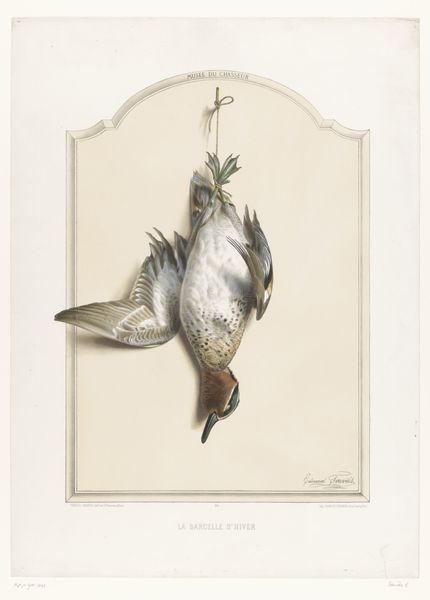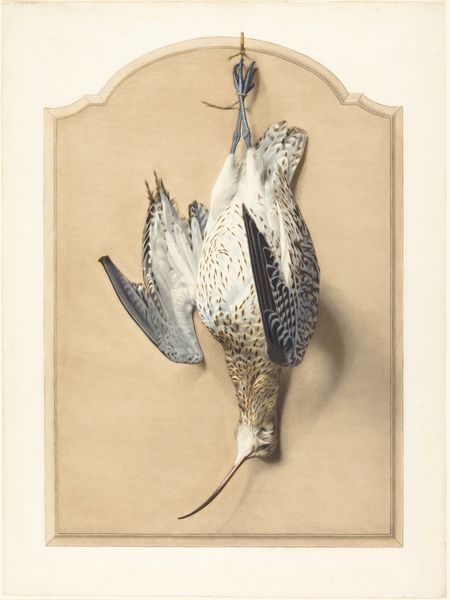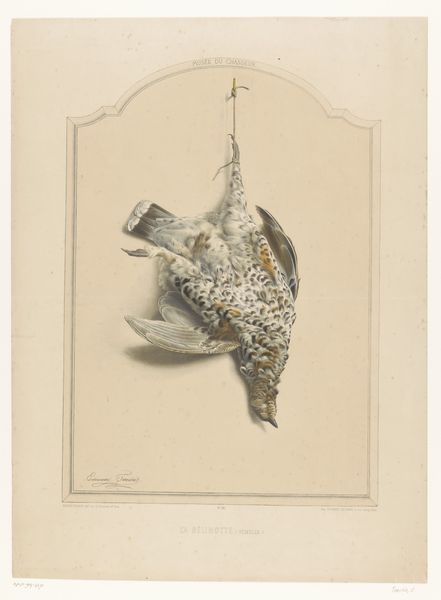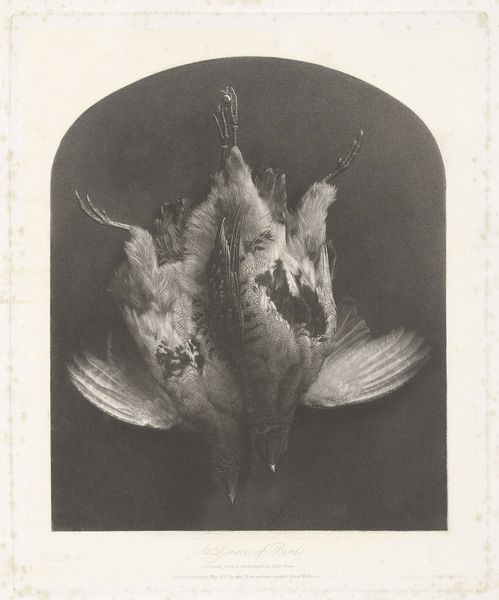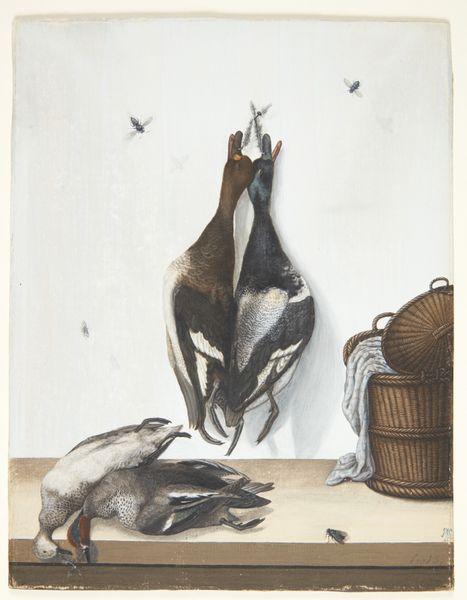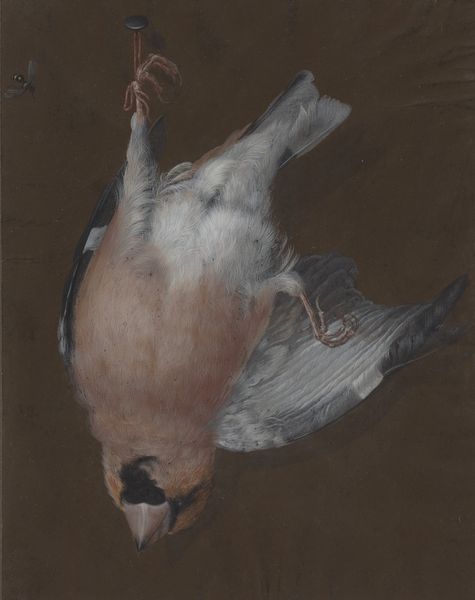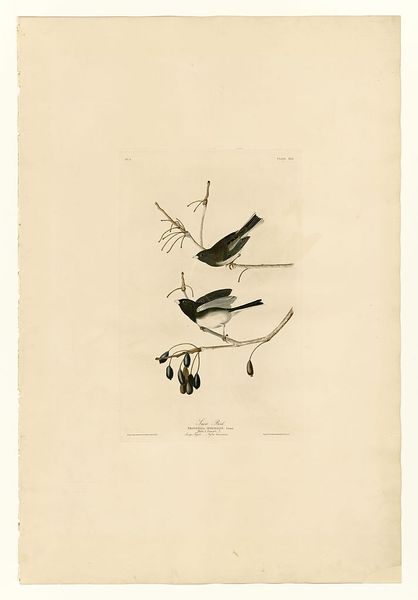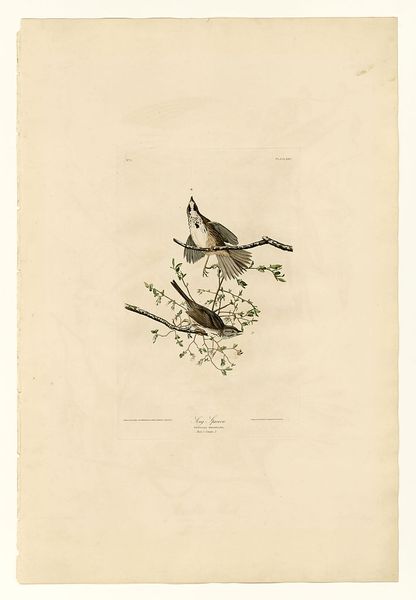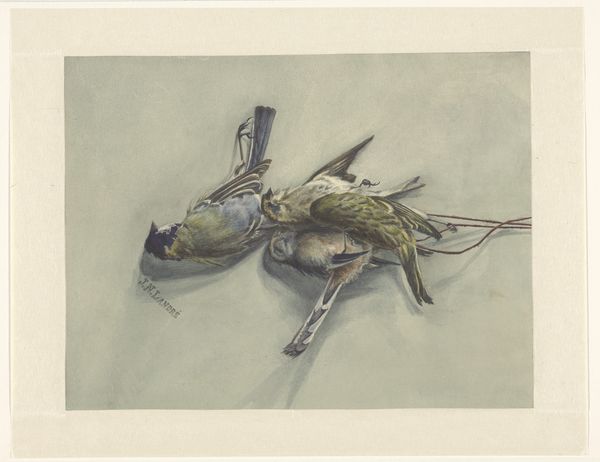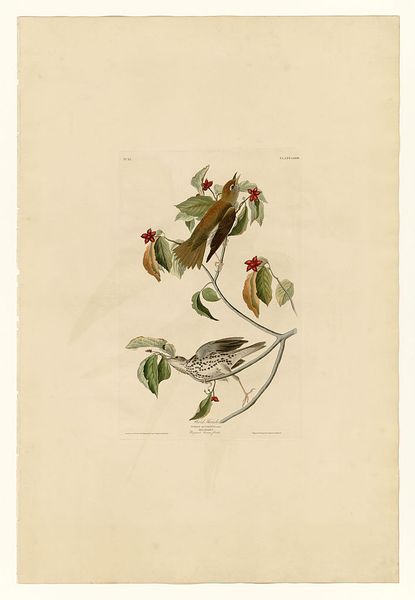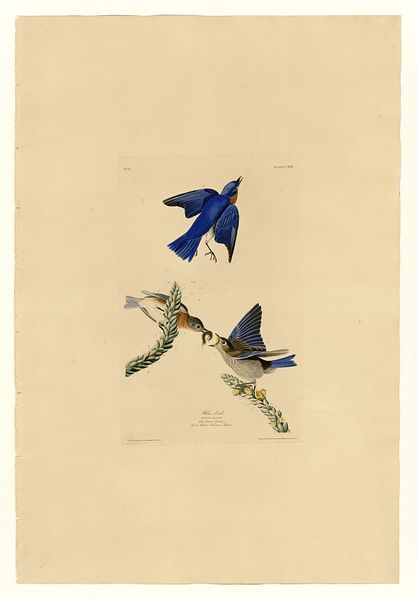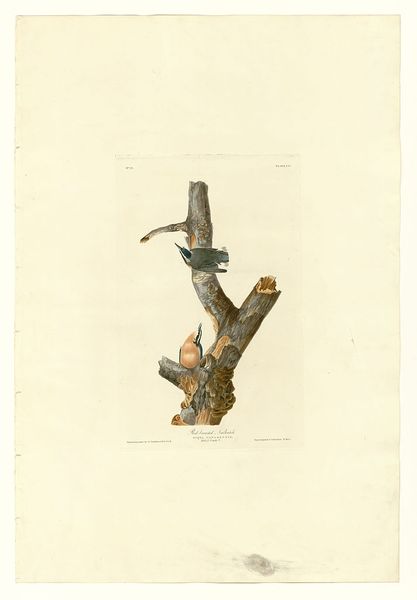
watercolor
#
watercolor
#
ceramic
#
watercolour illustration
#
history-painting
#
academic-art
#
watercolor
#
realism
Dimensions: height 704 mm, width 515 mm
Copyright: Rijks Museum: Open Domain
Curator: This compelling piece is entitled "Dode rotsduif hangend aan een poot" or "Dead Rock Dove Hanging from one Leg" by Édouard Traviès, likely created sometime between 1851 and 1870. It’s rendered beautifully in watercolor. Editor: It’s striking. There’s something stark and sorrowful about it, even with the delicate detail. The limp posture really emphasizes the finality of it all, you know? Curator: Traviès was well-regarded for his incredibly accurate depictions of animals. The interesting aspect for me, looking at his broader artistic output, is how this piece reflects shifting perspectives on the relationship between humanity and the natural world during the 19th century. Editor: Absolutely, but consider the materiality. Watercolor was relatively inexpensive, easily portable…this could be study, documentation, a precursor to taxidermy perhaps? It makes me think of the processes required to render a tangible record, manipulating physical reality. Curator: I agree. His dedication to precise observation reflects the scientific currents of the era, think Darwin, a desire to catalog and understand nature. You see this in his other ornithological studies as well. Yet the hanging pose elevates it beyond mere scientific illustration. It invites contemplation, perhaps about mortality, the food chain. Editor: It also gives me pause regarding the commodification of wildlife. Game was a staple for many, particularly emerging middle class, driving intense hunting and taxidermy practices to show your skill. How might those power dynamics affected perceptions of nature as simply something to be consumed or shown? Curator: That's insightful. By presenting a single bird so starkly, Traviès' work underscores the vulnerability of the individual creature within a broader context of social habits and transformations. Editor: Yes, seeing the process—the labor of creation, the physical tools—lets you trace cultural consumption in a tangible manner, doesn’t it? More than just aesthetics; its about the hand of the artist reflecting socio-economic priorities. Curator: Agreed. A seemingly simple study opens into fascinating complexities. Editor: It does indeed, and that blend makes for a particularly rich encounter.
Comments
No comments
Be the first to comment and join the conversation on the ultimate creative platform.
